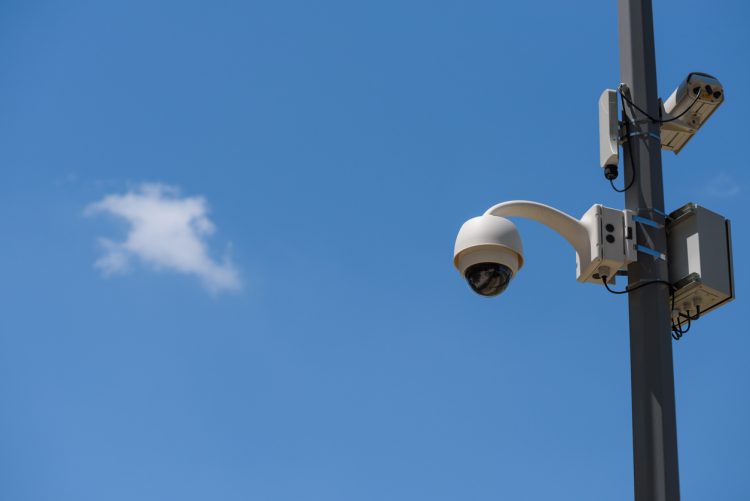
Articles
Editor’s Picks
Interviews
Behind the Campaign to Ban Facial Recognition Technology on Campus
By Henry Kronk
January 16, 2020
Facial recognition technology is still in its infancy. But its uses throughout American life and education institutions have been growing at an accelerating rate in recent years. Two advocacy groups—Fight for the Future and Students for Sensible Drug Policy—teamed up this week to launch a campaign to stop the spread of facial recognition software on college campuses.
So far, Fight for the Future and SSDP have reached out to 40 colleges asking whether or not they use facial recognition technology and if they have plans to do so in the future. Schools like Columbia University answered in the negative. Others, such as San Francisco University, Hampshire College, and Michigan State University, say they tried facial recognition out, but they have decided to discontinue its use. The advocacy groups hope that, by securing these statements from colleges and universities, it will dissuade developers from pursuing further applications of the technology.
Current Uses of Facial Recognition Technology on College Campuses
Most uses of facial recognition on college campuses to date have been experimental or rolled out in pilot programs. The University of San Francisco sought to increase security in residences and other buildings on campus by scanning faces at the door. Similar steps have also been taken at some K-12 schools with the aim of improving the response to school shootings.
Facial recognition has also been deployed in retail settings. The company PopId has established facial recognition kiosks selling students food at Stanford University and the University of Southern California. The value proposition is to make buying meals and snacks more convenient.
Companies like Ellucian have also proposed facial recognition systems to monitor attendance and student engagement in class, along with increasing security.
These uses might seem innocuous. But that’s not how Fight For the Future Deputy Director Evan Greer sees the issue.
“This technology is not particularly useful for public safety, but it’s perfect for behavior control, and mass surveillance of entire groups of people,” Greer said. “So when implemented on a college campus, facial recognition technology could enable the administration to track faculty and community members everywhere they go, monitor what they do outside of class, where they party, what groups they’re part of, what their political affiliations are, if they show up at a protest, who they’re dating, how often they go to the liquor store, or any number of other things.”
These are all hypothetical situations. But then, so are many of the claims made by facial recognition system developers.
As Ellucian Principal Architect Raja Saravanan writes in a post proposing the use of facial recognition technology on campus, “if implemented thoughtfully by faculty and administrators, this technology can make student data more personal and powerful, without sacrificing security.”

The Issue of Biometric Data Security
Some aspects of this debate, however, do not need to be relegated to ‘ifs’ and ‘cans.’ Tracking biometric data also requires storing and protecting that data. And campus systems are notoriously insecure and increasingly being targeted by hackers. Verizon’s 2019 Data Breach Investigations Report recorded 382 data security incidents and 99 confirmed data disclosures among education institutions.
Because of the size and scope of many universities, proper cybersecurity measures can be very difficult to implement. A white hat hacking group carried out 50 test attacks on U.K. universities in 2019. It never took hackers longer than two hours to breach each system. The schools tested had a 100% security failure rate.
“We’ve repeatedly seen college administrations fail to safeguard student data, even in the most basic ways,” Greer said. “I think it would be ridiculous to trust an administration to safeguard huge databases of biometric information.”
The Potential to Improve Student Achievement and Graduation Rates
There is, however, one sticking point for some when it comes to writing off facial recognition technology. Many are beginning to recognize that monitoring student performance marks a potentially highly effective way to improve achievement and graduation rates. A guidance document put out by the Department of Education’s What Works Clearinghouse (WWC) puts tracking student progress as their first recommendation to prevent drop outs. As the authors write:
Three key indicators—(1) attendance, (2) behavior, and (3) course performance—are reliable predictors of which students are at risk for dropping out. By continually monitoring students’ attendance, behavior, and grades, schools can intervene at the first signs of trouble, before students need intensive support to graduate on time.
Facial recognition software developers often promise to both track attendance and also monitor for student behavior and engagement by looking for certain expressions and indicators on a student’s face.
But at the same time, the WWC acknowledges that the evidence to support their recommendation is ‘minimal.’
“I fundamentally think that there’s not really anything to suggest that this type of technology is going to improve academic achievement,” Greer said. “In fact, I would argue that using this type of technology on students amounts to unethical experimentation on young people. We have no idea what the long-term psychological impacts will be on a student body being subjected to this type of ubiquitous surveillance at this kind of formative moment in their lives.”
A Response to the Lack of Regulation
For now, facial recognition technology remains largely absent on campus. It is for the most part unknown exactly how many schools have implemented these systems. But they’re also growing more prevalent on K-12 campuses around the country. In an October feature in Wired, the publication identified eight public school systems that had turned to facial recognition technology as a security measure.
“Fortunately, most administrations haven’t bought it yet,” Greer said. “But I think we’re at a pivotal moment right now where it’s very likely that the technology will start spreading on college campuses in the near future.
“We need lawmakers to step in and enact policies to protect people. Your average campus administrator shouldn’t have to be an expert on facial recognition in order to keep their students safe. There should be laws in place that prevent institutions from purchasing and using technology that has the potential to violate students’ rights, or professors’ rights, or community members’ rights on a mass scale.
“There should be a policy in place to prevent that. In the absence of that policy and the absence of legislation that protects people, we do think that institutions have a role to play in taking a stand and, at the very least, being transparent. So that’s where our campaign is starting.”
Fight for the Future launched its first campaign in 2011. Since, they have taken on issues like the threat of online censorship at the hands of SOPA and PIPA, NSA surveillance, and net neutrality. Banning facial recognition at college campuses and in other settings like music venues and public spaces marks their latest effort.
Featured Image: iStock.









No Comments